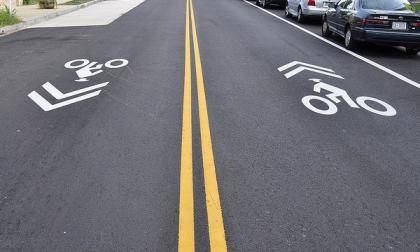Share The Road Signs Being Painted At Duke
Bike-sharing signs will be painted on roads at 25 locations campus-wide

Beginning this week, crews of painters will be stenciling "sharrows" - a symbol of a bike with chevrons above it - on campus roads without bike lanes or wide paved shoulders to encourage motorists and cyclists to share the road.
The sharrow, a nationally recognized symbol to alert drivers that cyclists are sharing the main traffic lane, will be painted at 25 campus-wide locations, from the Campus Drive tunnel on East Campus to the entrance of Science Drive across from the Washington Duke Inn.
Read MoreThe project is expected to continue through November, weather permitting. During the painting, some traffic delays may occur because traffic will be temporarily reduced to one lane.
"A common barrier for people considering biking on campus is how safe they feel on the roads," said Brian Williams, Duke's transportation demand management coordinator. "Putting sharrow symbols on the roads alerts drivers to be more aware of bicyclists on the road."
Duke Student Government partnered with Duke Parking and Transportation Services to cover the cost of the project, one of several initiatives Duke has launched to encourage biking at Duke. Among other bike enhancements, there is an online map of campus bike racks and Brodie and Wilson recreation centers now allow registered bike commuters to use shower facilities.
For the sharrow project, Williams has worked the past two months measuring the width of roads on Duke's campus and dividing them into three categories: roads wide enough for bike lanes, those wide enough to have a shoulder where bicyclists can ride and those too narrow for a bike lane or paved shoulder.
"To see something actually physically in the road is more effective to slowing down vehicle traffic and making people realize that a cyclist has just as much right to be on the road as a car does," Williams said.
Each sharrow will take a crew of five people approximately 40 minutes to paint, using a large plastic stencil and quick-drying street paint. Painting on the busiest roads, such as Campus Drive, will be scheduled on weekends and evenings to minimize traffic disruption.
Improvements for bike commuters are making a difference, Williams said. The number of registered bicycle commuters has risen to 525 from 370 last year.
"I'm excited about the sharrows and other improvements," Williams said. "They are big steps forward in making the campus more bike friendly."